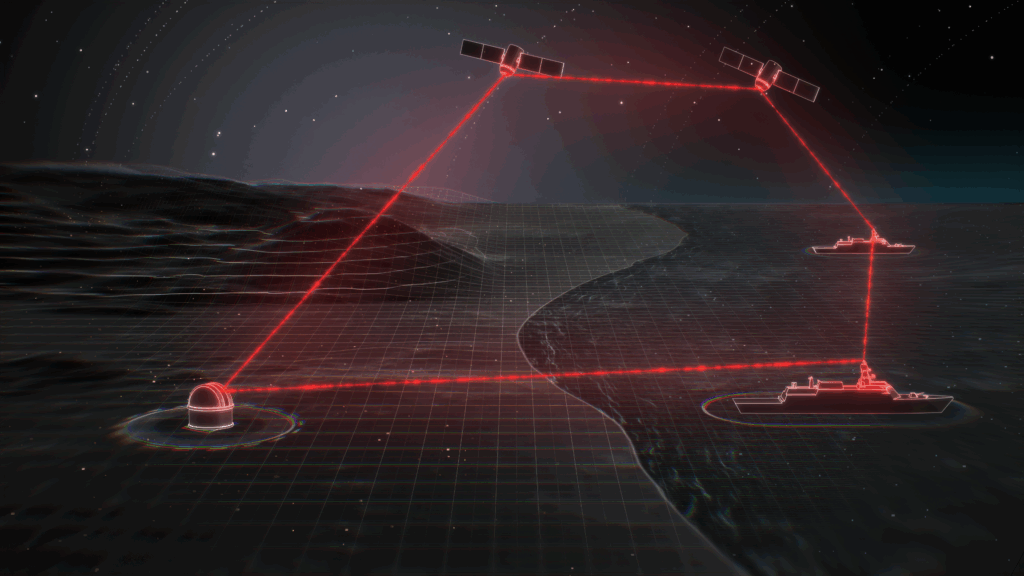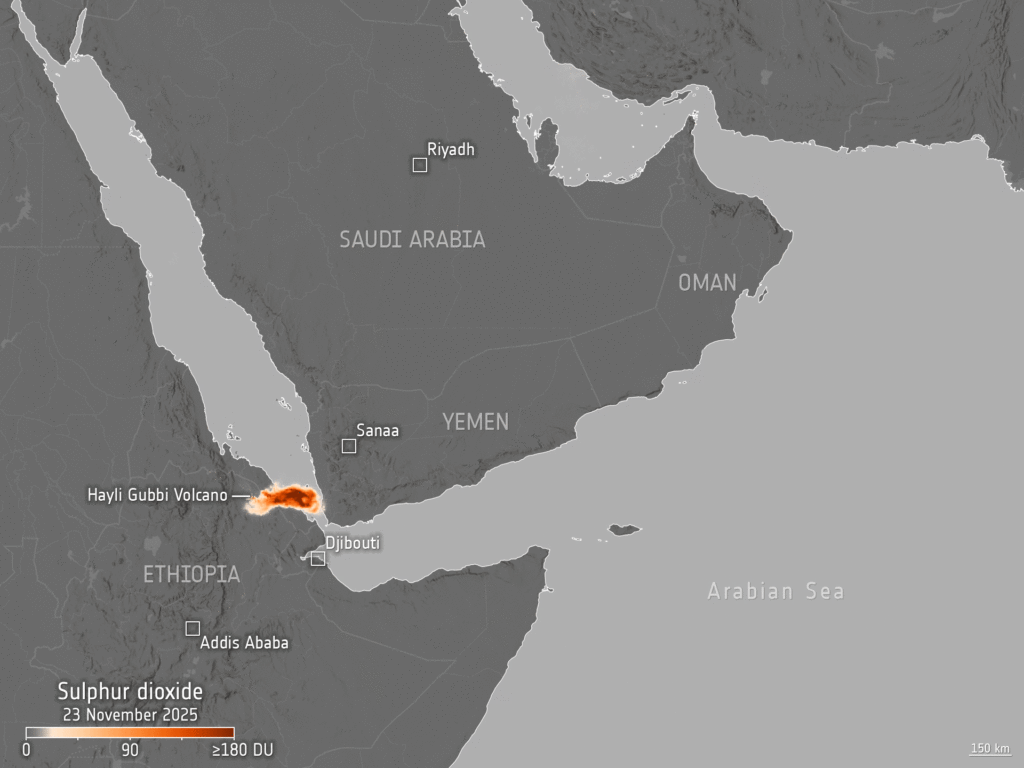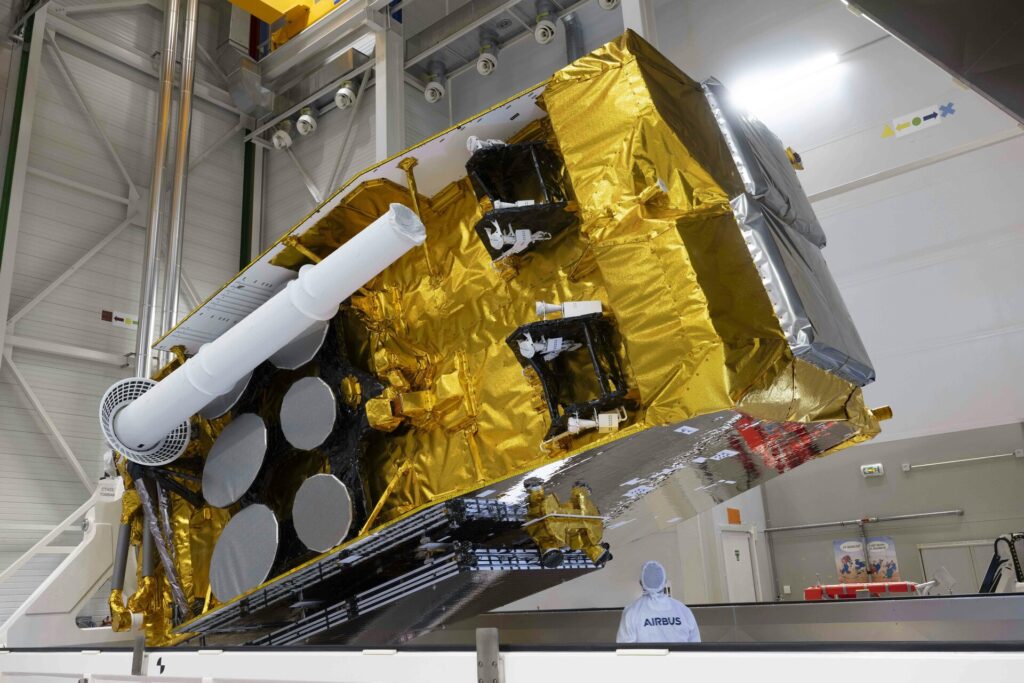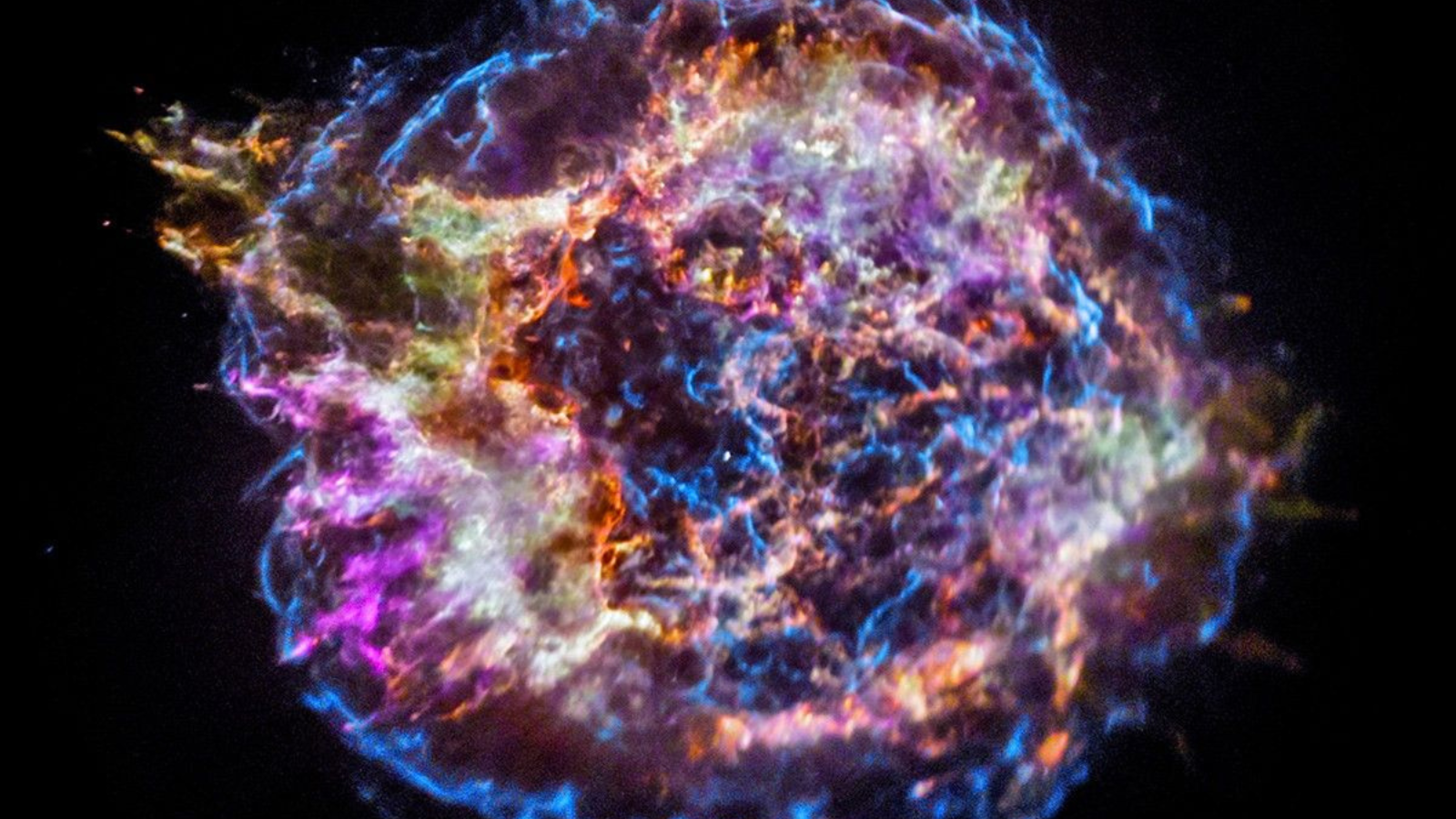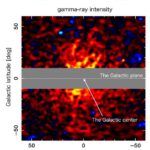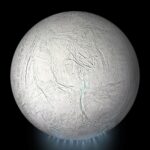Now Reading: Earth from Space: East Kalimantan, Borneo
-
01
Earth from Space: East Kalimantan, Borneo
Earth from Space: East Kalimantan, Borneo
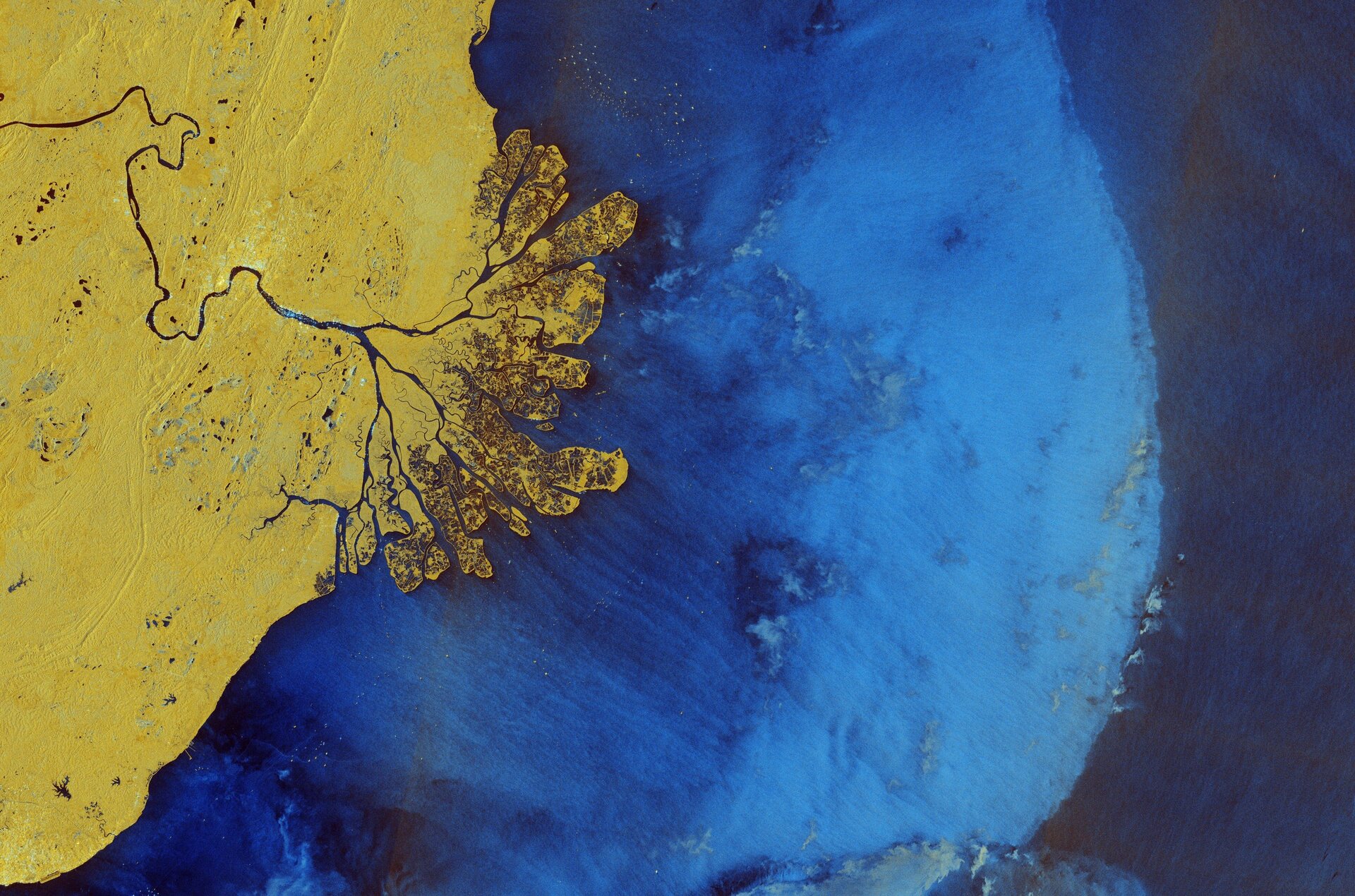

Copernicus Sentinel-1 captured this image over part of eastern Borneo, a tropical island in Southeast Asia.
Zoom in or click on the circles to explore this image at its full resolution.
Borneo, the world’s third largest island, is shared between Brunei, Malaysia and Indonesia. The area pictured here covers part of the East Kalimantan province in Indonesia, with the Makassar Strait to the east, a narrow passage in the west-central Pacific Ocean.
This radar image is from 31 March 2025, it is in false-colour and in ‘dual polarisation’ horizontal and vertical radar pulses. Compared to a single acquisition, this dual mode provides more detailed and complementary information about Earth’s surface. Different colours represent different types of land cover, such as yellow for dense vegetation and forests and dark blue for water.
Here, the land is dominated by forests, dotted with numerous small lakes appearing as dark blue spots. Brighter zones suggest built-up areas, mainly located along the course of the Mahakam River, which runs across the image. The capital of the province, Samarinda, can be seen on the northern bank of the river. Radar reflections from the ships stand out like shining jewels in the dark water of the river, as well as the sea.
The Mahakam River fans out into a labyrinth of distributaries before emptying into the Makassar Strait through a large and complex delta. The area alternates between agriculture and aquaculture, particularly shrimp farming, and extensive wetlands dominated by mangrove ecosystems. Zooming in, aquaculture structures can be seen in dark blue.
Varying colours of the seawater are caused by different atmospheric fronts and wind conditions, with stronger winds on the left in the lighter zone, and calmer conditions on the right.
Distinct greenish patches visible on the ocean surface, especially within the lighter blue area, are ‘rain cells’ – distinct areas of rainfall within a larger precipitation system. As we can see in the image, these cells can range in size, from small, localised showers to larger, more extensive rainfall events. As rain cells are easy to spot using satellite radar, scientists also exploit these images to monitor the weather.
Stay Informed With the Latest & Most Important News
Previous Post
Next Post
-
 012024 in Review: Highlights from NASA in Silicon Valley
012024 in Review: Highlights from NASA in Silicon Valley -
 02Panasonic Leica Summilux DG 15mm f/1.7 ASPH review
02Panasonic Leica Summilux DG 15mm f/1.7 ASPH review -
 03How New NASA, India Earth Satellite NISAR Will See Earth
03How New NASA, India Earth Satellite NISAR Will See Earth -
 04And Thus Begins A New Year For Life On Earth
04And Thus Begins A New Year For Life On Earth -
 05Astronomy Activation Ambassadors: A New Era
05Astronomy Activation Ambassadors: A New Era -
06SpaceX launch surge helps set new global launch record in 2024
-
 07Space Force plans new ‘Futures Command’ amid pressure to speed up modernization
07Space Force plans new ‘Futures Command’ amid pressure to speed up modernization












